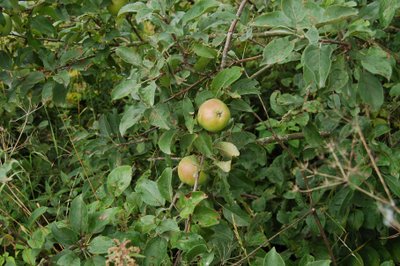Boletus edulis, English names: penny bun, porcino or cep, is widely distributed in the Northern Hemisphere across Europe, Asia and North America; it does not occur naturally in the Southern Hemisphere although it has been introduced to various countries there. It is a very popular mushroom in Scandinavia, where it grows in big numbers. It is known as the Karl Johan mushroom all over Scandinavia, named after the Swedish king Karl XIV Johan, who liked this mushroom very much.
 |
| Karl Johan, stig bachmann nielsen, Naturplan Foto. |
The English name porcino seems to derive from the Roman time in Britain, since the Italian name is porcini. I'll call it porcino in this small article. It is one of the most sought after mushrooms of Europe. Many boletus are edible, some with a good taste, others tasteless and others unpleasantly bitter. Boletus edulis is the best - edulis means eatable or edible. Porcino is considered one of the safest wild mushrooms to pick for the table as there are no poisonous species that closely resemble it. The mushroom has to be plucked while young, old porcinos get soft and swampy. Specimens should not be collected from potentially polluted or contaminated sites. Boletus edulis is known to be able to tolerate and even thrive on soil that is contaminated with toxic heavy metals.
 |
| photo:GB |
Boletus edulis has not been successfully grown in cultivation, but is available fresh in autumn. It is sold fresh in markets in summer and autumn and dried or canned at other times of the year. It keeps its flavour after drying. Distributed worldwide to countries where they are not otherwise found. It is low in fat and high in protein, vitamins, minerals and dietary fibre.
 |
| Løvenholm forest, stig bachmann nielsen Naturplan Foto |
Confusion: Tylopilus félleus, fel meaning bile because of its bitterness, (DK: Galde Rørhat) and Bolétus réticulatus, called Summer cep, (DK: Sommer Rørhat). Boletus edulis is often confused with this very bitter Tylopilus felleus, but can be distinguished by the reticulation on the stalk; in porcino it is a whitish net-like pattern on a brownish stalk, whereas it is a dark pattern on white in Tylopilus. The porcino has white pores, while the other has pink. If in doubt, tasting a tiny bit of flesh will yield a bitter taste.The Summer cep's flesh is less firm than other boletes. The most similar mushroom may be the Devil's bolete (Boletus santana), which has a similar shape, but has a red stem and stains blue on bruising.
"I confess, that nothing frightens me more than the appearance of mushrooms on the table, especially in a small provincial town."
Alexandre Dumas, early 19th century.
5 good edible mushrooms:
Boletus edulis: Porcino, Cep, Penny Bun ; (DK: Karl Johan)
Agarius campestri: Field champignon, in North America Meadow champignon, (DK: Mark champignon);
Cantharellus cibarius: Chanterelle, (DK: Almindelig kantarel);
Craterellus tubaeformis: Yellowfoot, Winter mushroom, Funnel chanterelle, ( DK: Tragtkantarel);
Craterellus cornucopioides: Trumpet of death, Black chanterel, Black trumpet, Horn of plenty, (DK: Stor Trompetsvamp).
Source: Politikens Svampebog, Svampe i Skandinavien, Danmarks Fugle og Natur, Felthåndbogen,Wikipedia.
I'll have to add this:
Whether or not Boletus edulis occurs in North America is up for debate, says this website from: Mushroom Experts Com.










